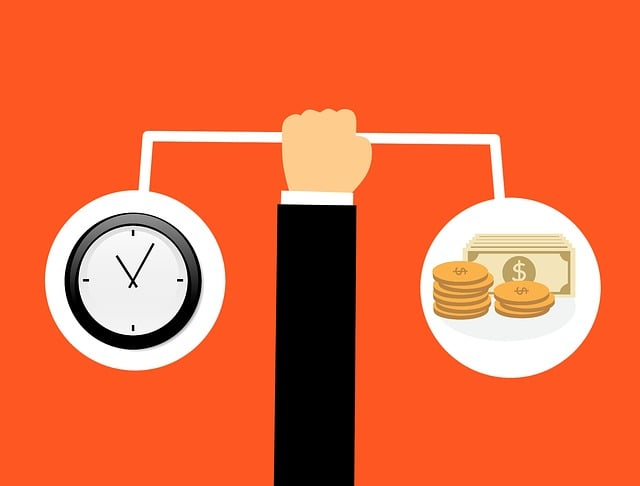What is Invoice Factoring?

Invoice factoring is a business financing method where a company sells its unpaid invoices for an immediate influx of cash. It’s also called accounts receivable factoring, factoring receivables, or invoice financing.
When a business factors receivables, the purchasing company collects the invoices. For business factoring receivables, the invoices are factored at a discount rate. Most invoice factoring companies charge a discount rate between 1%-5%.
The amount the company receives is a percentage of the invoice value, called an advanced rate. Most advance rates range from 75%-95%, although some companies offer 100% advance rates.
How does Invoice Factoring work?
Unlike a traditional business loan, invoice factoring involves three parties: the company factoring the invoice (invoice seller), the customer that owes the invoice (client), and the financial institution that provides factoring services (invoice factoring company).
The invoice seller enters into an agreement with the factoring company that defines the factor rate, or discount rate, additional fees, and conditions. The factoring process goes as follows:
- The invoice seller delivers its goods or services to the client and issues an invoice.
- The invoice seller then sends the invoice to the factoring company.
- The factoring company approves the invoice and purchases it at the discount rate.
- The factoring company then sends a cash advance at the advance rate.
- The invoice seller receives the advance within 24-48 hours.
- The factoring waits for the client to pay the invoice.
- Once the client pays, the factoring releases the reserve amount minus its fees.
Invoice Factoring Example
XYZ Company has a factoring agreement with the following terms:
- Advance rate: 95%
- Discount rate: 2%
It factors invoices that total $50,000. The factor applies the 2% discount rate and purchases them for $49,000.
Based on the advance rate of 95%, the factoring company sends XYZ an advance of $46,550. The wire transfer completes in 24-48 hours, and XYZ uses the working capital to cover expenses.
The remaining $2,450 goes into a reserve account. Once XYZ’s customers pay their invoices, the factor releases their reserve minus any additional fees.
What are the Advantages of Invoice Factoring?

Invoice factoring presents several advantages for small businesses.
Immediate Cash
Instead of waiting weeks to get paid, factoring provides businesses with immediate cash. The influx of working capital allows companies to cover operating expenses and overhead costs like payroll and rent.
Stable Cash Flow
Customer payments are unpredictable. When a small business factors invoices, it knows exactly when it gets paid. The predictable cash flow helps with financial planning and budgeting.
Providing Attractive Payment Terms
When a business knows it can convert outstanding invoices into working capital, it can offer more generous payment terms to customers. Attractive payment terms help bring in new customers, improve customer relations, and grow the business.
Easier to Qualify
Most small businesses struggle to qualify for a traditional bank loan. Invoice factoring depends more on the credit of the business’s clients than the business itself. Some factoring companies don’t have a credit score requirement, while others have very low credit score requirements.
Short-Term Funding Solution
In many cases, small businesses use invoice factoring as a bridge financing solution until they qualify for bank loans. Factoring helps keep the company running until it can get financing to grow.
Invoices are the Collateral
Since the financing arrangement is based on the value of your invoices, you don’t need to offer any collateral. The asset you sell serves as collateral until the customer pays the invoice.
Not a Loan
Factoring receivables is the sale of assets, not a loan. Companies don’t add any debt.
What are the Disadvantages of Invoice Factoring?

While factoring offers several benefits, you should also be aware of the drawbacks.
High-Cost
Invoice factoring costs tend to run higher than a traditional small business loan. For some companies, the extra cost is worth it if it means stabilizing their cash flow and staying in business.
Reduced Profit Margins
The discount rate takes directly from the business’s revenue. The reduction in revenue coming into the company reduces the profit margin.
No Guarantee of Collection
Factoring only works when a business’s customers pay their invoices on time and in full. Late payments drive up costs. And if a customer doesn’t pay, the factoring company can make the invoice seller repurchase the invoice on bad debts.
Some factoring companies offer limited protection from non-payment with non-recourse factoring. However, non-recourse is more expensive and only applies in certain circumstances.
Dependent On Customer Credit
While the business owner doesn’t need great credit, the company’s customers do. Factoring companies run credit checks on the invoice seller’s clients. If something is amiss, the company will deny factoring services.
Potential for Hidden Cost
Many factoring companies are upfront and transparent about costs, but some try to tack on hidden fees. Ensure you work with a reputable factoring company and carefully review the factoring agreement.
Not a Permanent Fix
While factoring receivables helps alleviate cash flow interruptions, it doesn’t solve the issue of customers paying late. Improving accounts receivable management tactics like setting up payment reminders, making it easier for customers to pay, and offering discounts can help reduce late payments.
How to get Invoice Factoring:
Follow these instructions to apply for invoice factoring through United Capital Source.
Step 1: Make Sure Your Customer is Reliable
Factoring invoices only works when your customers pay their invoices on time and in full. Ensure your customers will pay.
Step 2: Gather Your Documentation
When you apply, the factoring company needs to review the following documents:
- Driver’s license.
- Voided business check.
- Banks statements from the previous three months.
- Business tax return.
- Accounts receivable aging report, Accounts payable report, debt schedule.
Step 3: Apply
You can complete our one-page application or give us a call to apply. Either way, you’ll need to provide the information above and the invoice amount you want to sell.
Step 4: Speak to a Representative
Once you apply, one of our representatives will reach out to discuss fees and terms attached to the sale. You’ll get an upfront breakdown of all costs, so you don’t have to worry about hidden fees.
Step 5: Receive Approval
The entire process takes about two weeks to finalize. Funds will appear in your bank account 1-2 days after completing the application.
Invoice Factoring Pros & Cons – Final Thoughts

Invoice factoring is a viable financing solution for small businesses that need immediate working capital. The technique converts assets into liquid capital to help with cash flow issues.
Before signing an agreement, small business owners should know all the risks and benefits of factoring. Discuss the fees and terms with the factoring company and ask follow-up questions.
Contact us if you want to get started with invoice factoring. Our loan experts will discuss your financing needs and help you find the right lending package to help you meet your goals.











